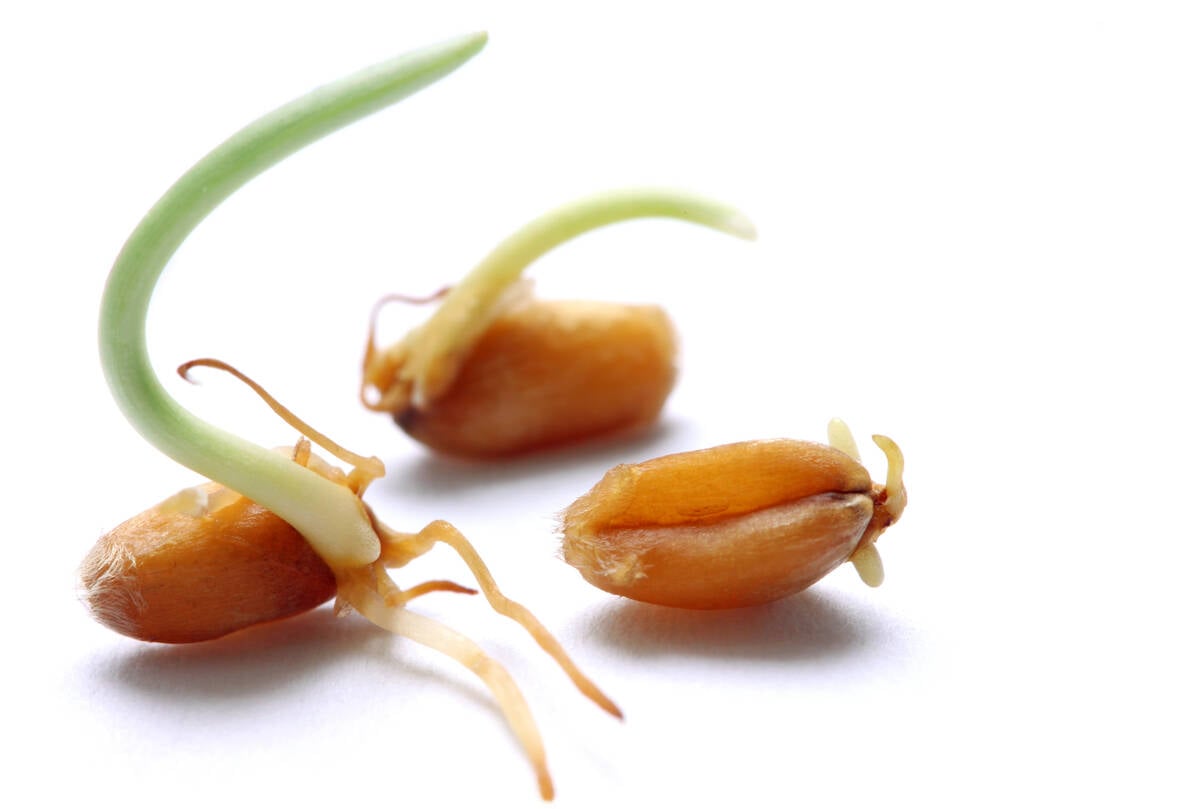French pea production expanded more than analysts expected in the wake of lucrative new government subsidies.
FranceAgriMer reports production will exceed one million tonnes in 2010, nearly double the 555,601 tonnes harvested last fall.
The startling increase is due to a government subsidy introduced in 2010 that encourages farmers to grow protein crops in favour of cereal grains and oilseeds.
The new subsidy and the simultaneous loss of coupled support for cereal and oilseed crops created a relative incentive of $81 per acre for growing pulses this spring.
Read Also

Manitoba farmers fight sprouted wheat after rain
Rain in mid-September has led to wheat sprouting problems in some Manitoba farm fields.
French farmers responded by planting 450,000 acres of yellow peas and 291,000 acres of faba beans this year, up from 279,000 and 217,000 acres respectively in 2009.
Canada’s pulse industry expressed concern about the production distorting government incentives but analysts didn’t anticipate this big of a production response.
Stat Publishing forecast 625,061 tonnes of French peas in 2010-11, a 13 percent increase over last year’s output.
Greg Kostal, president of Kostal Ag Consulting, said the big French pea crop is happening at a good time. Europe will be starved for feed grains due to crop failures in the former Soviet Union.
“Whatever peas are produced (in France) are just going to get gobbled up domestically,” he said.
Kostal expects minimal competition from French peas into the Indian subcontinent, which is Canada’s main market.
If anything, the two pea exporting countries will duke it out in Europe’s feed markets.
In 2005-06, Spain consumed 837,100 tonnes or 78 percent of Canada’s bulk pea exports.
Kostal said the European feed market will establish a floor price for Canadian peas but he expects strong sales into the Indian subcontinent.
Indian farmers planted 26.1 million acres of Kharif or winter pulses as of Aug. 19, which is up 20 percent over the same time last year.
India’s government recently announced a 30 percent increase in the support price for pulses, which could further pick up the pace of plantings, but analysts say most farmers have already made up their minds on what they were seeding.
Kostal isn’t too concerned about India’s production because its growing demand for pulses has continually outpaced supply.
That’s a good thing because Statistics Canada projects 3.1 million tonnes of peas, up from Agriculture Canada’s July estimate of 2.7 million tonnes but down slightly from last year’s 3.4 million tonne harvest.
Aside from France, other major pea exporters are looking at smaller crops. Australia is expected to produce 280,000 tonnes, down 21 percent from last year.
The U.S. Department of Agriculture is forecasting 667,000 tonnes of U.S. peas, a 15 percent fall from 2009 levels.
Kostal said Ukraine is unlikely to be a player in pea markets outside the former Soviet Union.















